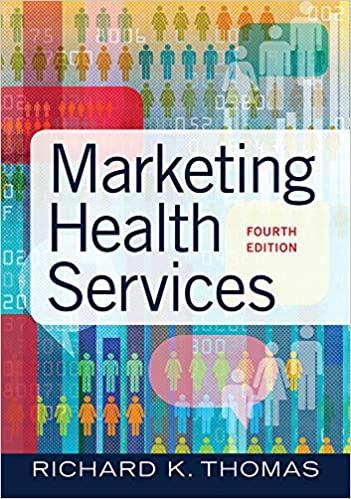When the legal age for donating blood in Virginia was lowered from 18 to 16, Virginia Blood
Question:
When the legal age for donating blood in Virginia was lowered from 18 to 16, Virginia Blood Services (VBS) began to explore new methods of communicating with potential donors—particularly first-time donors—and attracting them to blood-collection events. VBS consulted with a marketing firm on how to use social media to reach those audiences. It quickly became apparent that using social media was appropriate for reaching not only those as young as 16 but also college-aged students. Upcoming blood drives on college campuses signaled an opportunity to market the events in a way that would be applicable to both demographics. With a target population of high school and college students, the challenge of drawing interest and engagement was significant.
VBS developed a strategy of using a Facebook event to organize and promote a series of blood drives on campuses across the state. The events were linked to VBS’s Facebook profile, which was already disseminating content and news. The success of this strategy was measured through the RSVP feature, which indicated who and how many would be attending, might be attending, or would not be attending a specific event. A related measure was the visibility of the feature. People without Facebook profiles could not see the event information unless it was made available to the public. People with profiles, in contrast, not only could see the event but also could follow and RSVP to the event; the user’s timeline would then publicize this intention to attend or participate.
In a circle of friends, the more people planning to attend, the more people are influenced to attend or would know about the event. In the case of VBS, even if just 1 in 20 people invited to the blood drive says “yes” or “maybe” to participating (which endorses the activity), then hundreds—if not thousands—of people who were not even invited would find out and could sign up themselves. In this way, the RSVP would likely take on a life of its own.
The immediate success of VBS’s Facebook event strategy was evident: In just one week, several hundred people had viewed the promoted events, and more than one-third of them responded using the RSVP feature. For a blood drive at the University of Virginia, for example, VBS received 165 yes, 64 maybe, 56 no, and 247 no responses. More than 500 people viewed the event page in less than seven days.
But the real results came after the blood drives, when the initiative was evaluated. Data were compiled on people who actually attended (as opposed to those who merely said yes), who were viable donors, who donated “doublereds” (i.e., a certain type of blood), and who were new donors. Because people generally use their real names on Facebook, VBS was able to develop a small programming script that matched donors in the database with the Facebook Event log of names. The final tally was a remarkable 28 percent increase in new donors, all solicited through Facebook. For some of the events, the double-red total increased more than 20 percent.
Questions
1. What demographic did VBS seek to penetrate, and why did it think an innovative method would be required to do so?
2. In addition to Facebook, what other forms of social media might VBS have employed?
3. What characteristics of Facebook and other social networks make them ideal for this type of campaign?
4. How effective was the VBS campaign, and how do the results compare with what might be expected using traditional marketing methods?
Step by Step Answer:






